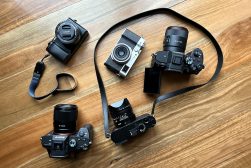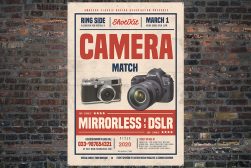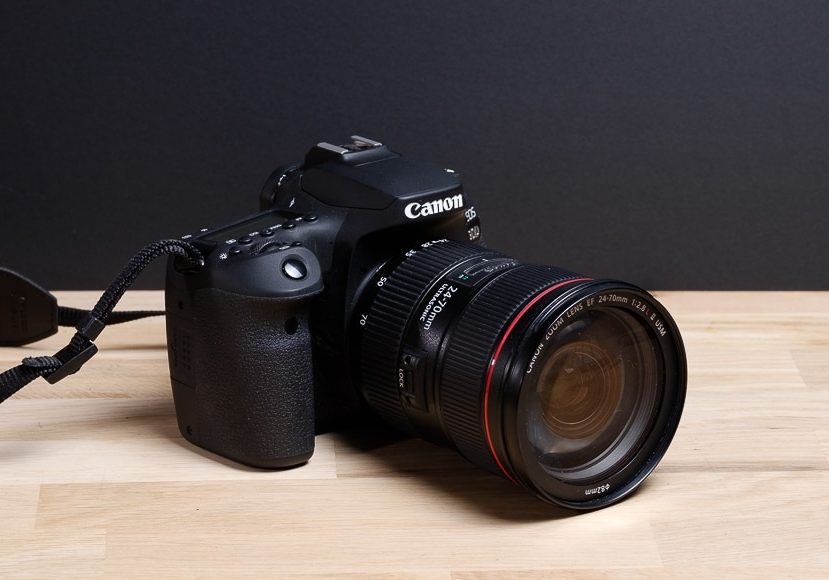
Canon EOS 90D DSLR Camera Review
Here it is! An in-depth, no-holds-barred review of the Canon EOS 90D. Find out how this camera performs and if it's worth buying in 2023!
At some point in the last few decades, most people will have owned or shot with a Canon film, digital or video camera. I can still recall the fascination I had with our very first Camcorder from Canon.
Canon was first established in Tokyo in August 1937 as the Precision Optical Instruments Laboratory. They say Laboratory but they didn’t actually have the facilities to produce their own glass so they utilised Nikkor lenses – true story.
The point of this unnecessary history lesson is to highlight that Canon has been in the optical imaging business for quite a long time now.
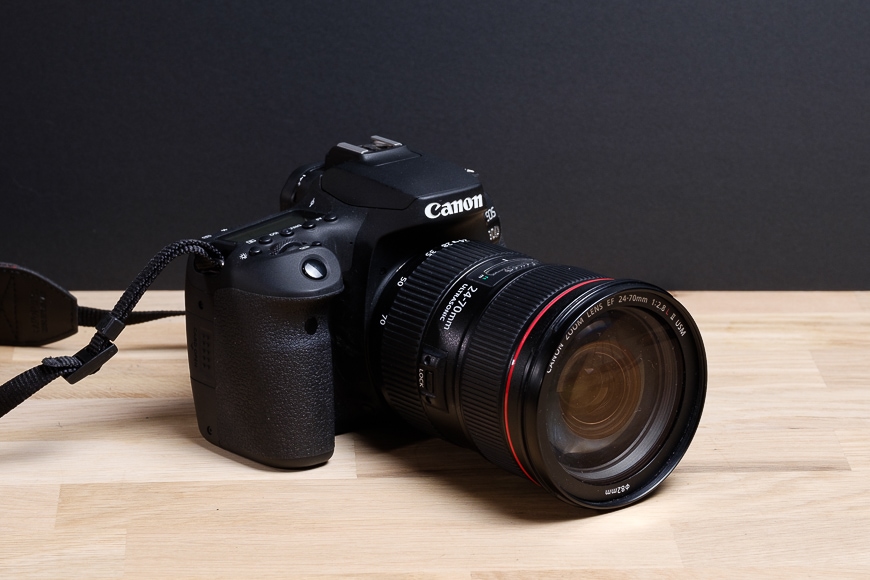
Powerful DSLR with a 32.5 megapixel sensor, vari-angle LCD touchscreen, and highly capable 45-point AF system.
Throughout the last century and into this one Canon has proven to be a trusted camera developer at both a pro and consumer level. Fortunately, they continue to invest their historical knowledge into every product they create.
One of the more recent developments is the Canon EOS 90D – an enthusiast-level DSLR with some impressive specs and capabilities.
The 90D replaces the popular Canon 80D which in turn replaced the 70D – that was my first serious DSLR when I got into digital photography – another true story.
Mind you, I haven’t shot with a Canon for a number of years now so I was keen to give the 90D a go. Fortunately, some things are just like riding a bike – for better or worse, you never forget them.
I am pleased to announce that this camera is memorable for the better reasons and I was quite impressed to see how far the series had come.
What’s more, the Canon 90D is actually a tale of two cameras: a traditional DSLR with some mirrorless camera capabilities that make it very versatile.
The history lesson is over but I still have a lot to say on the brilliant Canon 90D DSLR. Read on.
Summary
The 90D will please enthusiasts (Canon shooters especially) with its solid build and comfortable, familiar layout. Performance-wise, the autofocus system is fast and responsive, though hunts occasionally in lower light, and image quality delivered by the 32.5MP sensor is predictably excellent. Overall, the 90D offers great value for money.
Table of Contents
Canon EOS 90D Specs
- Canon reliability
- Whopping sensor
- Fast burst
- Autofocus in low light
- Live View awkward to shoot with
- 4K is a little soft
- 32.5-megapixel APS-C size sensor
- 10fps continuous shooting
- 4K video at 30P
- 3″ Touch LCD with 1040K dots of resolution
- Live View – mirrorless mode
- 140.7mm x 104.8mm x 76.8mm (5.53″ x 4.12″ x 3.02″)
- 701gm (25oz)
Build & Appearance
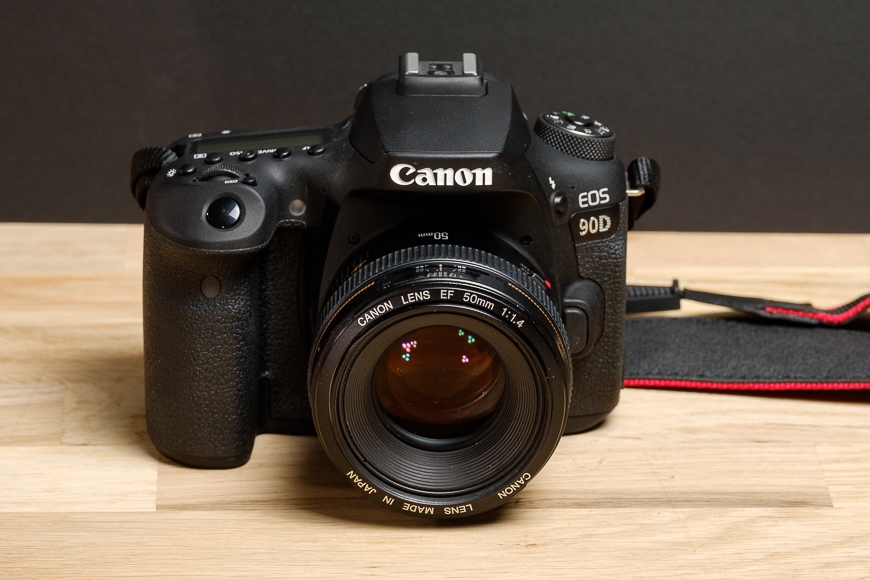
The Canon 90D with the Canon EF 50mm f/1.4 makes a nice combo.
There is something very reassuring about good quality design that you know exists in a product before you even touch it.
The weather-sealed Canon 90D has a familiar look to it that most photographers are able to quickly identify as being “very Canon”.
Being an enthusiast-level camera – with some pro-level qualities – it’s not overcooked nor is it dumbed down to meet the intended audience.
While many people believe that the business-end of a camera is in the front, all the action is really happening on the rear – so we’ll start there.
The 3″, 3:2 LCD touch screen sits flush against the back of the camera and blends into the lines of the body. The screen is able to flip out on its vertical axis and then rotate a full 180 degrees. I like how you can protect the glass of the screen by folding it to face inwards to the camera (though I also recommend buying a screen protector for any camera you purchase).
This screen on the 90D is reasonably bright and makes for a perfect vlogging and selfie screen. It’s also beneficial for videographers who like to shoot from the hip or use a gimble.
Aside from the dominance of the screen, the rear of the 90D features some key function buttons as well as three key controls.
The first is the spinning-clicking wheel that also houses the directional pad and SET button. This is a fairly traditional element of most DSLR and mirrorless cameras. It’s primarily used to control menus.
Secondly, there’s a really nice joystick that allows you to move and select your focal point. I love how this is a nice size and has a textured surface for better control.
The final core dial is the switch for changing from stills mode to video mode. The centre of this features a button for jumping to Live View for mirrorless-style shooting from the LCD.
To the right of these is a textured surface for your thumb to comfortably sit – this is also contoured for greater comfort.
The only other stand-out feature is the OVF or Optical View Finder: it boasts 100% coverage with a 0.95% magnification.
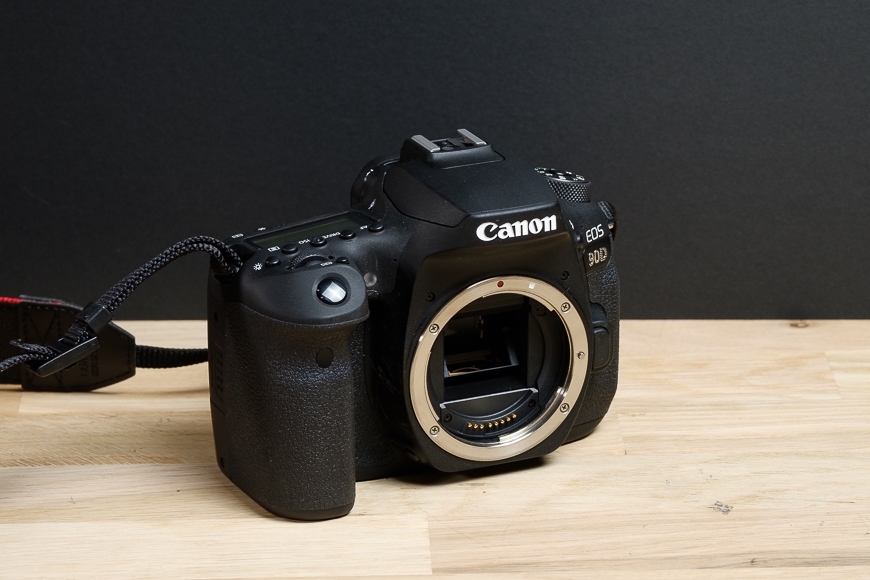
The Canon 90D features an APS-C sized 32.5MP image sensor.
Aside from that, there are the usual functions buttons such as Menu, Info and Q Menu.
To one side of the camera, there’s a pop-out door for a single SD card – it’s a pity that Canon couldn’t squeeze in dual cards for this model.
The other side features three rubber covers for terminal ports including HDMI, Micro USB, 3.5mm Mic, 3.5mm headphone and a remote port. That’s an impressive set of ports allowing for greater flexibility of set up, especially for video.
The top of the Canon 90D features a single large command dial for setting your camera mode. This is textured, well marked and has a lock that you push down to move the dial. Below it is the meaty On/Off switch.
The other side of the top plate features a monochrome LCD screen to show details of shooting settings – this also lights up for night-time shooting.
Again there’s a range of standard function buttons making it easy for quick control. The deep grip has a single command dial for altering your settings as well as the shutter button. It’s interesting that on one side the strap lug is set back into the moulding and on the other, it protrudes.
Finally, the top features the hot-shoe and the pop-up flash. I found the flash mechanism and housing to be a bit cheap and flimsy – if you gave it a knock it would likely dislodge or snap off.
The front of the camera is relatively featureless with a function button hidden almost underneath the lens mount and of course the lens-unlock mechanism. The base of the camera is home to the metal screw thread – for mounting to a tripod or plate – and the battery door.
Overall, the Canon 90D feels really solid – unlike some other DLSR’s that feel hollow but have the same size as a pro-DSLR.
The exterior shell is made from hardened plastic with all metal fixtures – lens mount and hot shoe – securely fixed in place. The buttons and dials have tight tolerances as does the hinge-system for the touch screen.
The pop-up flash seems to be the only weak point in the design.
Unless my memory has failed me, this feels like a far superior product to the 70D.
Ergonomics & Handling
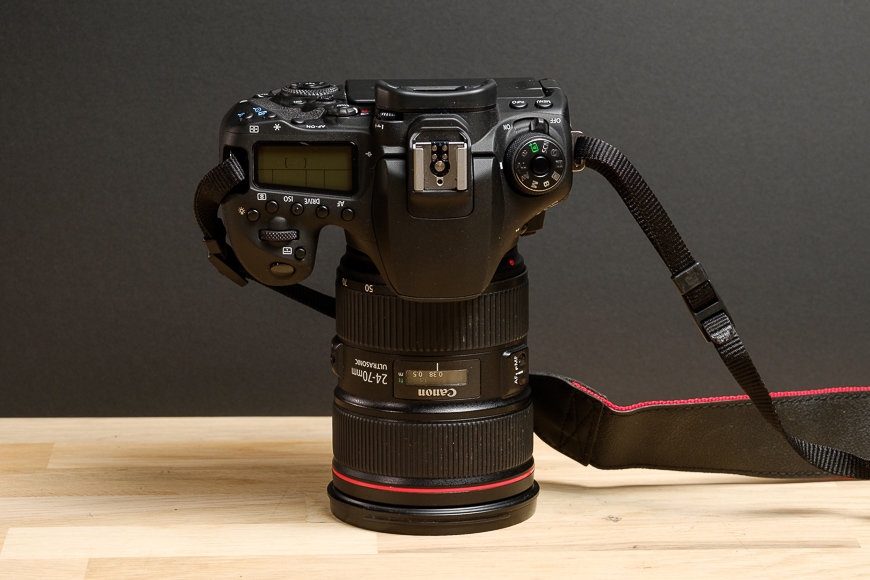
The Canon 90D with the Canon EF 24-70mm f/2.8 L Mark II would be great for travel.
As previously mentioned, the layout and design of the Canon 90D are not over-cooked. There’s a nice balance between the size of the buttons and dials and the space between them.
As a result, holding the camera and accessing all of the necessary functions is easy as they are all within reach and you are not bumping one to access another.
The buttons are responsive with a nice level of feedback and the dials that spin do so with just the right amount of resistance.
There are two indents just above and just below the right-hand side of the touch screen making it easy to grab it with two fingers to pull it out and twist it. Otherwise, it feels a bit stiff to open quickly with one finger.
The hinge-mechanism is solid and doesn’t allow the screen to flop around or move without your meaning it to.
I love the deep grip on this camera and it’s something I miss in my current shooting experience, especially on cold days when my fingers just won’t obey me. You can really hang on to this camera even with a large and heavy lens and still feel in control.
The OVF has a soft rubber eye-cup that does not appear to leave marks on my glasses – great that the diopter is easily accessible and accurate.
The menu system is well laid out and the flow of functions and settings is simple to understand. I like the ability to make your own custom menu settings for quick and familiar access.
You can control the menu via the rear click wheel and directional pad or you can use the touch screen for full control – this is something that a lot of other camera brands are still working out.
Thankfully, the top LCD screen has an orange-tinted light, as otherwise it’s very hard to read even in natural light.
Being a bit of a hybrid, the Canon 90D is able to shoot like a typical DSLR with an OVF, or as a mirrorless-style camera via the Live Mode system using the rear screen.
While shooting off the rear screen may be practical for video, it just feels clumsy doing so for stills photography. And with my eye-sight, I have to hold the camera out at a decent length to really see clearly and ensure I have secured clear focus. I appreciate the effort from Canon but it’s not without its complications.
One thing I will point out is the overall weight of the 90D kit. I tested the camera with a 50mm f/1.4 and the wonderful 24-70mmf/2.8 L ii lenses. With the later, the kit felt unnecessarily heavy and unbalanced toward the front-end – this is something that I do not miss about DSLRs.
Granted, I’m now a mirrorless system shooter and the equivalent kit is probably half the weight. It makes me wonder why DSLRs are still so hefty – surely the mirror box is not that heavy?
Overall, shooting with the 90D is a pleasure thanks to a familiar and very comfortable design and layout.
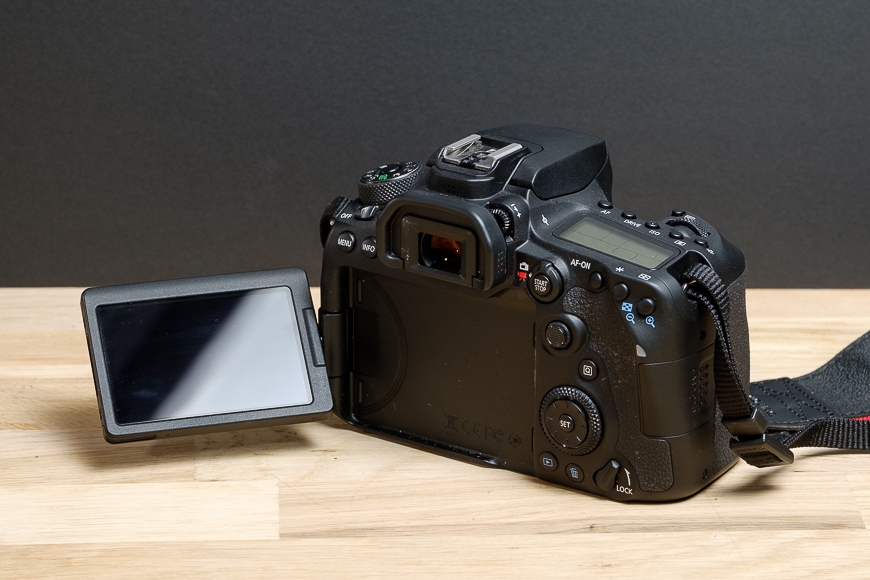
The Canon 90D features a rotating, flipping touch screen perfect for videography.
Focus Performance
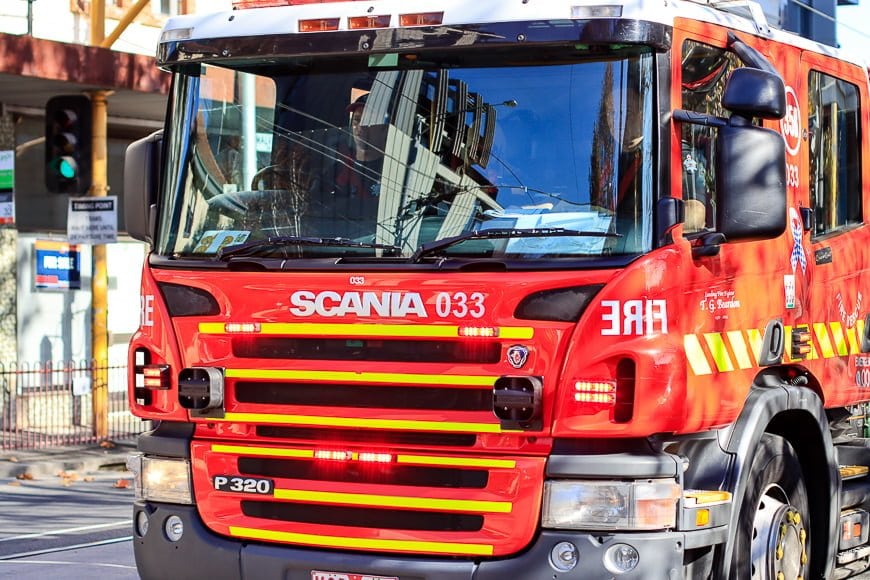
Canon 90D + Canon 50mm f/1.4 | SS 1/1000 | ISO 200 | f/3.5
The focusing system on the Canon 90D is quite comprehensive with several clever AF modes. The Manual Focus mode also features 5X and 10X on-screen magnification so you can check your focal point for sharpness.
The autofocus system is a 45 point Dual Pixel CMOS AF that includes Face Detection, Eye Detection and Tracking AF – all of which are good at holding to the intended subject.
A bonus of this being a DSLR with an optical viewfinder is that there’s zero lag time between what you see and what the camera sees – although modern mirrorless cameras have also bridged this gap.
In practical tests, I found that the autofocus system is fast and responsive – I tested this out with both a 50mm f/1.4 and the 24-70mm f/2.8 L.
However, the autofocus on the 90D was only fast and accurate 100% of the time in good light. I found that even just sitting in my living room during the day the focusing system would intermittently hunt for something to hold on to.
It wasn’t terrible but did impact my experience. At first, I thought it was the 50mm that was struggling but the same occurred on the 24-70mm lens.
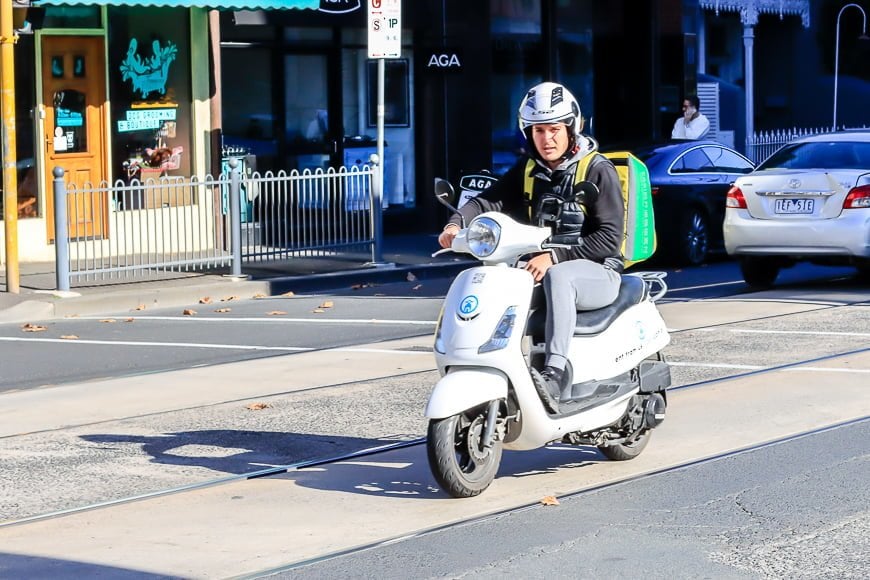
Canon 90D + Canon 50mm f/1.4 | SS 1/1000 | ISO 800 | f/10
In good light, I was able to track subjects and have the focus hold tight. Face and eye detection were really impressive also.
When shooting in high-speed continuous (up to 10fps) in OVF or DSLR mode, the camera can struggle to maintain focus on a subject it’s tracking.
When shooting in Live View or mirrorless-mode, high-speed continuous tracking is effectively held throughout the burst.
Thanks to the use of the touch screen, you can select your subject to be tracked and the camera does the rest.
The Canon 90D and its focusing system would be reliable for sports photography and portraits providing the lighting is suitable.
Low Light Performance

Canon 90D + Canon 24-70mm f/2.8 L Mark II | 70mm | SS 1/640 | ISO 3200 | f/2.8
I have already talked above about the hit and miss focusing performance in low light so I won’t repeat myself.
But, thanks to the new 32.5MP sensor, low light image quality and overall performance are good – which isn’t bad considering it’s an APS-C sized sensor on board.
The Canon 90D features a standard range ISO from 100 to 25,600. This also can be extended up to 51,200.
Images shot with higher ISOs are relatively free of noise and image degradation – certainly nothing that post-processing cannot handle.
Overall it produces pleasing images that would appeal to the enthusiast photographer and audience.
Image Quality
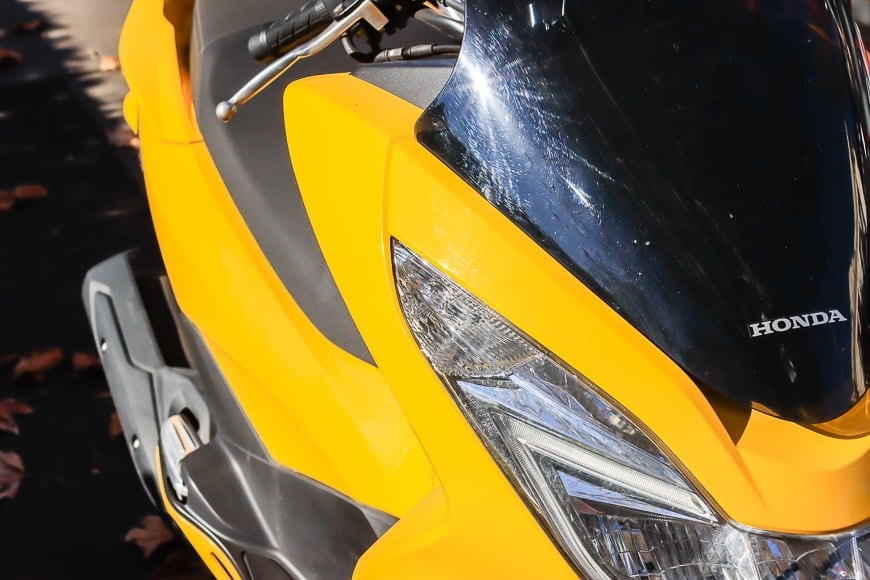
Canon 90D + Canon 50mm f/1.4 | SS 1/3200 | ISO 800 | f/9
As we have discussed, the Canon 90D has a huge sensor for an enthusiast-level camera. Plus, the 32.5MP CMOS sensor is supported by Canon’s DIGIC8 processor.
As a result, images in either RAW or JPEG have excellent sharpness, nice contrast and great overall quality. As I mentioned, Canon has been at this for a long time and their colour science and image production are top-notch.
What’s more, it can perform in-camera image processing from RAW files to JPEG to reduce your overall workflow and remove the need for post-processing.
To further support the capabilities of the Canon 90D, there’s a huge selection of Canon EF lenses available plus a big range of third-party lenses from Sigma and Tamron.
For the most part, modern-day cameras are all at such a great standard in terms of image quality that it can be hard to differentiate.
For me, a lot of the differences in image quality will come down to the lenses you choose to pair with a camera. Having a good quality lens with edge-to-edge sharpness and no aberration or distortion is far more important than the number of pixels on a sensor.
Don’t get me wrong, the sensor and processor make a huge difference – but they are worthless if you have a crappy lens.
Overall Performance

Canon 90D + Canon 50mm f/1.4 | SS 1/4000 | ISO 100 | f/1.4
The Canon 90D is a familiar and reliable DSLR that delivers solid performance and image output.
The great thing about DSLR technology is that you get a full day of shooting from a single battery – unlike most mirrorless systems that chew through batteries like a bag of Doritos!
The battery is a rechargeable Li-ion Battery LP-E6N and according to the usual rating, it’s going to give you approximately 1860 shots when shooting in OVF mode. Once you switch to the Live View mode, then that great battery performance drops considerably to 450 shots.
The 90D has a maximum shutter speed of 1/8000 and I noticed the camera jumping to this when shooting in aperture priority on a bright sunny day.
Shooting in continuous high will net you a high-speed burst of 10fps making it a perfect solution for sports shooters or those interested in wildlife photography.
Other Useful Features
It wouldn’t be a complete review without covering the video output of the Canon 90D.
It can put out 4K video – cropped or uncropped at 30p – however, if you want sharp performance when shooting action then you’re better sticking to HD. You can also achieve some creative results thanks to the Full HD at 120p.
The Canon 90D makes for a great vlogging camera thanks to its rotating screen with touch focus controls – although I would find it a heavy camera to hold for long at arm’s length. Using a gimble for a camera of this size and weight would make much more sense to ensure comfort and better stabilisation control.
I like that there are suitable output and input terminals such as a 3.5mm Mic and headphone jack. However, a bit of a design issue is that if shooting selfie-style with the screen flipped out the mic and headphone cords obstruct the screen.
It’s not a deal-breaker but just worth considering for the YouTubers and influencers out there.
Value for Money
The Canon 90D is a great mid-level enthusiast DSLR fit for those that take their photography seriously but don’t intend to make a living off it. As such, at around US$1200, it’s exceptional value for money.
Especially when you consider that you’re getting a DSLR with a whopping 32.5MP sensor. I don’t know how they pack an APS-C size sensor so tightly.
Add to this a great burst-rate and AF tracking modes that enhance the usability of this camera.
If you are looking for a quality DSLR that’s robust, will last well beyond its warranty and deliver great image quality, the Canon 90D is an excellent buy.
What’s more, Canon and other third party lens manufacturers have a wide range of lenses to suit any budget and photographic genre. I was able to test out the 90D with the Canon EF 24-70mm f2.8 Mark II which retails for around US$1600 and the Canon EF 50mm f/1.4 which goes for around US$400.
Both lenses performed well on the 90D and they represent the diversity of lenses available. With a camera of this quality and at this price, you can afford to build up your kit with a couple of great lenses.
Canon EOS 90D Review | Conclusion
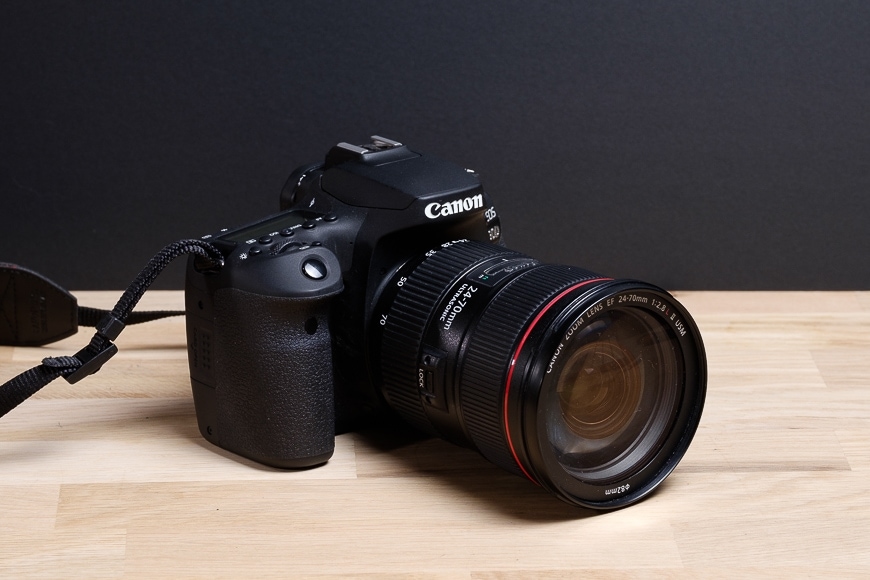
The Canon 90D is a highly capable enthusiast-level DSLR. Clearly, Canon has packed as much as they felt necessary into a camera system at this price point.
Having not shot with a Canon camera for some time, I was a little apprehensive about what to expect. Fortunately, I was not disappointed.
I was impressed that the 70D I originally shot with had undergone some important updates to arrive at the quality and performance of the 90D.
The jump to a 32.5MP sensor and DIGIC8 processor ensures that the focusing system, high-speed continuous bursts and overall image quality are great.
I believe that the Live View mode is neat but feels a little awkward when put to the test. You’re better off just sticking with OVF shooting – after all, it’s a DSLR with an (apparently heavy) pentaprism inside that mirror-box.
I see what Canon is trying to achieve with a camera like this – a little bit of everything.
In practical terms, it’s great for vlogging provided you don’t want the best quality 4K available. Also, it is great for fast pace shooting provided you don’t want to do so at night. A lot of pros and a few little cons but overall it’s pretty cool.
At the end of the day, the Canon 90D is a great DSLR camera with some enhanced features well suited to the enthusiast photographer. What’s more, it comes at an excellent price for a camera of this quality.
The build and design of the camera are Canon through and through and should last a lifetime. My biggest question to DSLR manufacturers regardless of brand is, do DSLRs really need to be this heavy anymore?
Granted I come from a Fujifilm mirrorless system so the size and weight difference are obvious. But still…
You will not be disappointed with picking up a copy of the Canon 90D as you get exactly what’s promised and what you pay for – familiarity, reliability and performance.

Powerful DSLR with a 32.5 megapixel sensor, vari-angle LCD touchscreen, and highly capable 45-point AF system.









